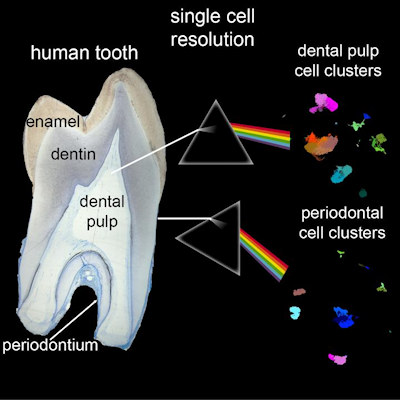May 17, 2021 -- Scientists are still trying to understand how stem cell clusters assemble to form complex organs. To help demystify this phenomenon, researchers developed an ensemble of cell-tracking algorithms based on convolutional neural networks (CNNs) to track the movements in colonies of human induced pluripotent stem cells (hiPSCs). The research, which was published in Stem Cell Reports on May 11, demonstrates the potential of artificial intelligence (AI) in developmental biology.
Scientists employ lineage tracing techniques to monitor the fates of single cells during development. Traditionally, scientists have monitored cell movement through various means, from direct observation to fluorescent cell markers and genetic tools.
However, automated tracking of cell movement in whole embryos in vivo is limited in scale due to inadequate technology such as low throughput of 3D imaging, and has been restricted to small organisms. Even ex vivo, it is a challenge to track cells in dense multicellular environments.
In the research published in Stem Cell Reports, scientists at Gladstone Institutes trained CNNs to track the movement patterns of hundreds of hiPSCs growing together in a colony. The training data consisted of cell-tracking labeling data collected from seven human annotators at five-minute intervals over a six-hour period.
The resulting CNN-driven system is a dense-cell-tracking platform based on time-lapse microscopy that generates longitudinal measures of properties of the cells and colony organization within developing tissues and organs ex vivo. The results offer unprecedented insight into how organization arises from the collective action of individual cells on timescales ranging from minutes to days.
"This technique gives us a much more comprehensive view of how cells behave, how they work cooperatively, and how they come together in physical space to form complex organs," said co-author Todd McDevitt, PhD, in a statement. McDevitt is a senior investigator at Gladstone Institutes and a professor of bioengineering and therapeutic sciences at the University of California, San Francisco.
When the CNNs were deployed to track new colonies of stem cells, they revealed much more activity than previous cell-tracking techniques such as fluorescent cell markers had identified. The scientists reported that nearly every cell was on the move, and much of the movement appeared chaotic and random.
"Going in, we didn't really expect there to be that much cell motion, so we had to come up with new approaches to understand the apparent chaos of the cells," said co-author David Joy, a Gladstone Institutes graduate student.
They also found that cells nearest the edges of each colony moved the most, and those at the center the least.
"Some cells move with a lot of persistence in once direction, while others move around and around but never get far from where they started," said co-author Ashley Libby, PhD, a former graduate student in McDevitt's lab.
The cells tended to follow a cyclic pattern of 15 minutes of active movement followed by 10 minutes of quiescence. The authors attributed this behavior to the interaction between local polarizing cues and global inhibition of directional migration, noting that similar cyclic migration patterns have been observed in Escherichia coli and other eukaryotic cells.
The researchers also explored how changing the conditions of the cells' environment can alter how cells move. They allowed the hiPSC aggregates to adhere to three different coating materials: Matrigel, vitronectin, and recombinant Laminin-521 (rLaminin). They found that the cells exposed to rLaminin and vitronectin had higher cell density than those exposed to Matrigel, and the cells exposed to vitronectin had lower migration velocities and traveled shorter distances.
While developing the system, the researchers compared five different CNN architectures, including representatives of the popular VGG, U-Net, and Inception architectures. All five CNNs exhibited comparable average performance, each segmenting the data with a performance of 0.86 or better as measured by the area under the curve (AUC) of the true-positive rate plotted against the false-positive rate. For the final system, the researchers combined the three highest-performing networks (FCRN-B, Count-ception, and a Residual U-Net) into a single "ensemble CNN" that achieved an AUC of 0.94.
The approach may inspire new insights into the complex processes underlying multicellular organization and morphogenesis and prove useful to researchers trying to coax cells to come together into complex organs for therapeutic purposes.
"If I wanted to make a new human heart right now, I know what types of cells are needed, and I know how to grow them independently in dishes," McDevitt said. "But we really don't know how to get those cells to come together to form something as complex as a heart. To accomplish that, we need more insights into how cells work cooperatively to arrange themselves."
Do you have a unique perspective on your research related to cell biology? Contact the editor today to learn more.
Copyright © 2021 scienceboard.net










